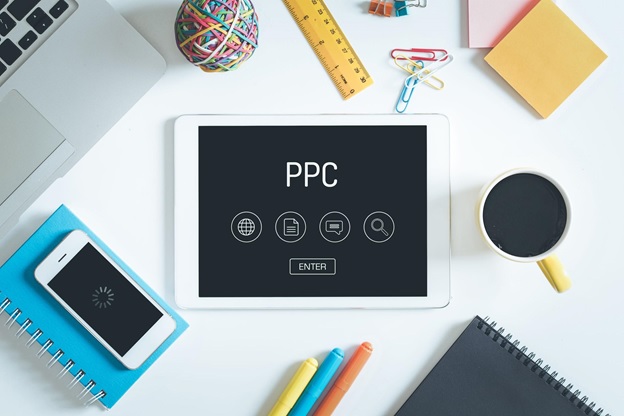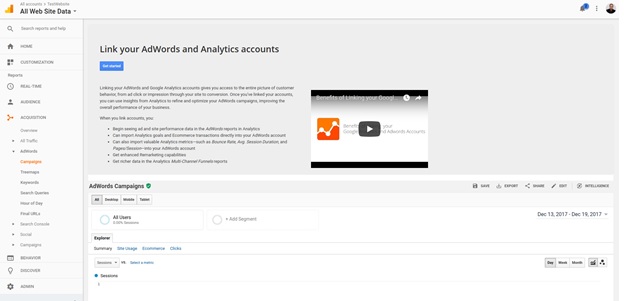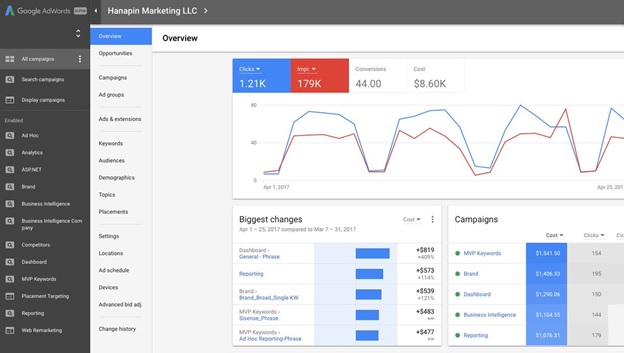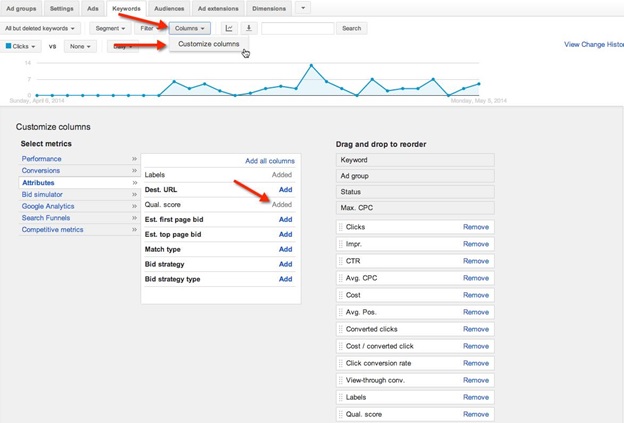SEO
Free SEO Analysis
SEO Services
Content Marketing Services
Local SEO
Link Building Services
Specialized SEO Services
PPC
REPUTATION MANAGEMENT
Free Reputation Management Analysis
Reputation Management Services
Review Management Services
Specialized Reputation Management Services
CEO Reputation Management
Brand Enhancement
Business and Directory Listings
Comprehensive Reputation Management Audit
SOCIAL MEDIA
Free Social Media Analysis
Specialized Social Services
WEB DEVELOPMENT
Free Website Analysis
Web Design Services
Mobile Development Services
Website Maintenance Services
Specialized Development Services
MARKETING AUTOMATION
Free Marketing Automation Analysis
Specialized Marketing Automation Services
Comprehensive Marketing Automation
INDUSTRIES
ABOUT DMA
PPC
Things to Keep in Mind When Assessing the Success of PPC Campaign
Request a quote
Its Fast, Easy & Free
Executive Summary
- The prelude to every marketing campaign is identifying, describing, and setting goals. Otherwise, you won’t have anything to compare your PPC campaign results to and see if you are doing well.
- To measure the success of your PPC campaign, you must have access to the data, and the more of it the better.
- If you want to assess the success of a PPC campaign, you have to actively monitor it.

You have decided to put some effort into a pay-per-click (PPC) campaign and have successfully launched it. What now? Is it the end of your efforts or is there something more to do? Since PPC is yet another marketing campaign, of course there are things to be done.
You have to assess the success of your PPC campaign, not only when it’s done, but also while it’s still in motion. Tracking the performance of a PPC campaign in real time, measuring its effectiveness, and analyzing the key metrics will not only help you maximize your return on investment (ROI), but also become more successful at launching future campaign.
Since achieving all of the above is a dream come true for many digital marketers, we have decided to share a few tips and tricks to help you become a PPC campaign analysis guru.
Always Start With Goals
The prelude to every marketing campaign is identifying, describing, and setting goals. Otherwise, you won’t have anything to compare your PPC campaign results to and see if you are doing well. I know this may sound silly, but since PPC is such a buzzword in the online marketing world, many marketers jump into it without setting clear goals beforehand.
Setting goals will help you draw your progression curve and see exactly where you are when you look at the data. Since each business is unique, marketing experts encourage businesses to come up with their own goals, no matter how similar they are to the competition in the niche.
While some business would like to generate more leads, others want to focus on conversion rates. Some just want to increase brand awareness by increasing their website traffic. On the other hand, businesses in the SEO end game use PPC to get a competitive edge. For each of these, some metrics will be more important than others. For example, in the last scenario, all metrics are regarded as equal because the end game dictates it.
In any case, you should pay attention to all of the metrics, and that’s exactly what I am going to explain here.
Look At It as A Long-Term Effort
To measure the success of your PPC campaign, you must have access to the data, and the more of it the better. How do you get the data? By looking at your campaign as a long-term effort. A PPC campaign should not be solely observed from the ROI standing point. Over time, you will have access to so much data that it would be practically a waste to look only at the immediate ROI.
While we’re at it, assessing the success of your campaign is not referring to just one metric. To get powerful insights and identify aspects in which you’ve succeeded, as well as the ones in which you have failed miserably, you have to look at all the data and all the metrics.
The data you need has not been generated over a couple of days, nor can it be generated over a single week. It may take a month before you have some actionable data in your hands, sometimes even more — it depends on the niche you’re targeting. If you target one with high activity, you’ll get your data fairly quickly, but with a narrow niche, the situation is quite the opposite.
If your PPC campaign is not performing well, don’t despair. This situation is far more likely to occur than one where everything runs smoothly from the start. Do the landing pages need to be fixed, or do you have to eliminate some ads that are performing poorly? Maybe you have to get rid of the keywords with few hits? How to know what to do?
You will have to identify the elements that are performing poorly to increase the efficiency of your PPC campaign. And the more you do it, the faster you will learn where to look and how to fix and modify things. Let’s see the key indicators that will help you assess the performance of each cog in your PPC campaign machine.
Click-Through Rate
I’ve learned over time that this metric is incredibly important, so my eyes now automatically hit the exact spot on the screen where CTR numbers should appear. CTR tells you how many people have seen your ad (total ad impressions) and how many of those who’ve seen it then clicked on it (total clicks).
When it comes to assessing ad efficiency, CTR is the metric to fall back on. The formula for CTR calculation is an easy one — all you have to do is divide the total clicks with the total ad impressions, and voila, you’ve got the number you were looking for.

People commonly make the mistake of forgetting that the number of impressions is important here, and they modify the ad to be more clickable. High CTR is not a good thing; it means that not many people have seen your ad. This is a good time to revisit your bids and keywords.
In any case, you can easily find the CTR metric when you merge your Google Ads and Analytics accounts.

Cost Per Acquisition
As far as important metrics go, cost per acquisition falls quite close behind the CTR. If you want to see how much your customers cost you, CPA is your new best friend. It will tell you exactly how much it costs to acquire a customer. Controlling the costs of your campaign is important.
Remember when we were talking about setting goals? Well, acquiring a customer for some may be subscribing to a mailing list, while for others it may be a completed purchase on an ecommerce website. CPA branches into two independent metrics — cost per transaction and cost per conversion, which are self-explanatory. After you link your Google Ads and Analytics accounts, you will be able to track them under the Acquisition tab.
If you want to determine the exact ROI of your PPC campaign, CPA is an inversely proportional metric to ROI. For instance, if your CPA is low, your ROI will be very high, and vice versa. So what should you do if you see a spike in your CPA metric? Focus on less expensive keywords and modify the ad. Be sure to also take a look at the maximum cost-per-click (max CPC) values — if they are too high, lower them.
Cost Per Click
Since we have already mentioned CPC, let’s take a closer look at it. The CPC metric shows you how much each click on the ad costs you. This another financial metric that will help you monitor your spending so you don’t go over your budget.
You can manually calculate the CPC metric by dividing the total cost of advertising with the number of ads clicked. But I don’t see a reason for this, since you can check it in the Google Ads and Analytics tool.
How to decide which of the ads to keep as they are and which to modify or abandon completely? Those with a low CPC are the ones that have many clicks, so you can leave those as they are. However, the ones with a high CPC need to be reviewed so you can decide whether they are worth the money.
Conversion Rate
The conversion rate metric directly shows how far or close you are to your business goal. This KPI will help you determine which of the ads in your campaign are leading to conversions — people taking the action you wanted them to in the first place (make a purchase, subscribe, etc.).
If you have aligned your PPC campaign with your business goals, the conversion rate metric will help you determine how effective your campaign really is. Since this metric is important, both Google Ads and Analytics are equipped with features to track it in real time.
When setting up conversion goals, you have to pay attention to impressions, too. We will talk about impressions more in the next section. But for now, you have to know that before people do what you want them to do, they have to see your ads.
For instance, if you want 100 people to subscribe to your newsletter and you see that your ads earn 500 impressions, this means that your conversion rate goal is 20%.
If you have a conversion rate of less than 20%, you have to go back to the elements that have a direct impact on the conversion rate. You have to test them and optimize them down the line to reach your goal of a 20% conversion rate.
Once you’ve reached this goal, you will have to maintain it to successfully finish a PPC campaign.
Wasted Spend
The wasted spend metric goes hand in hand with the conversion rate metric. Wasted spend indicates how much money is wasted in the process of clicking on the ad but not converting. If your wasted spend is high, you should address it as soon as possible, because it will lead to a drained budget while you’re still far away from your campaign goals.
The best remedy for this problem is to identify the negative keywords — the ones that aren’t resulting in CTR but cost too much to be displayed in the search engine result pages (SERPs). Start by creating the filter to show you the keywords with no conversions.
After you refine your keywords, you should go back to this metric and see if there are any results. Keep refining your keywords until the wasted spend is kept at a reasonable level.
Impressions
Once your PPC campaign is live, people will start seeing your advertisements. If you want to see how many have seen your ads, you have to check the impressions key performance indicator (KPI). In my opinion, this KPI is the most straightforward. Want to see how many people have seen your ads? Click on impressions and there you have it.

Furthermore, impressions is the most important metric if you have specific business and PPC goals — increasing brand awareness, new product or service launch, promotion of an important event, hiring of top talent, etc. In other words, if your goal is to get your ads out there and have them seen by as many people as possible, impressions are your best buddy.
Search Impression Share
This metric can be a bit confusing. It represents the ratio between the number of times your ad could have been among the search results against the number of times it actually was among the search results. Not many people use it, but you should know it’s a powerful KPI that can help you defeat your competition.
If the percentage is high, it means you have to further optimize your campaign because you are losing precious impression due an insufficient budget or bad keyword choice and bidding. Don’t worry; you can fix it by applying a simple trick.
Slightly increase your budget for well-performing campaigns that have a poor search impression percentage. By increasing max CPC bids, you will not only increase impression share but also improve your ad rank.
Furthermore, you can opt for a cost-effective solution and revisit your keywords. If you split your ad groups into smaller ones, you will be able to deliver better text ads to them, along with a custom-tailored landing page for each one.
Impression share graphs in green indicates you have perfect keywords and bids. But now what? If you want to reach ultimate PPC campaign success, you should expand. You can use the same strategy on Bing, Facebook, Instagram, or any other platform you see fit for your business marketing purposes.
Quality Score
Now we come back to the rather complicated KPI — quality score. It indicates how well the synergy of keywords, ads, and landing page is performing. Remember those keywords you picked and bid on? Quality score will help you determine if you picked the ones relevant to real people’s search queries. The better the performance of all these aspects, the higher the quality score will be.

The quality score correlates with two important KPIs — CPC and ROI. If you have a high quality score, your ROI is increased and CPC is well-optimized and kept as low as possible. A perfect quality score is hard to achieve, because it takes time, effort, and the right skillset to maintain high impressions and a low CPC metric.
Bounce Rate
A high bounce rate means something is wrong with your campaign. You are hemorrhaging money but you don’t see any results. People see your ad, click on it, arrive on your landing page, but they are not reacting well to your call to action. There might be two reasons behind this scenario.
You are either targeting too broad of an audience and there are many people in it who are not particularly interested in your product or service, or your landing page is performing poorly. Both of these can be fixed easily.
First you have to revisit who you are targeting, and just like when you are fighting for a piece of the search impression cake, you should break down the groups into smaller ones and retarget them with proper short- and long-tail keywords. Follow this by custom tailoring landing pages for each. Landing page optimization may seem like tricky business, but it’s not. With a proper guide, you can become far more knowledgeable in less than an hour. Long-tail keywords are often overlooked by marketers who are eager to reach success as fast as possible. You should consider using them because they bring a good conversion-to-cost ratio.
Best Practices in PPC Marketing
Now that you know the key KPIs to focus on to assess the success of your PPC campaigns, it would be wise to understand how to utilize them.
Make sure to monitor your Google Ads and Analytics accounts regularly. If you want to assess the success of a PPC campaign, you have to actively monitor it. This practice will enable you to manage and optimize daily and ensure that you achieve even better KPIs.
Optimize the text in your ads. Since ads are the first thing people see online, you have to do your best to optimize the ad text. Your ad text should contain keywords, but it should also be able to communicate a powerful message to a potential customer.
Create campaigns with mobile users in mind too. Since there are more and more people browsing the internet on the go via smartphones, you have to design PPC campaigns to cater to mobile users too. For instance, your landing pages have to be mobile-friendly, the text ad has to be very clear and concise, and so on.
PPC marketing can be somewhat complicated, but when you know the terminology and what to look for, things become fairly straightforward. If you immerse yourself into the Google Ads and Analytics environment, you will begin to steadily increase the performance of your PPC campaign and know exactly what’s going on by skimming over the data in seconds.
Our Sales team